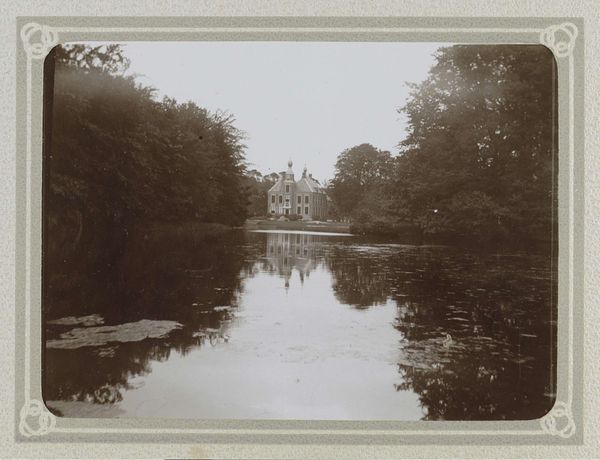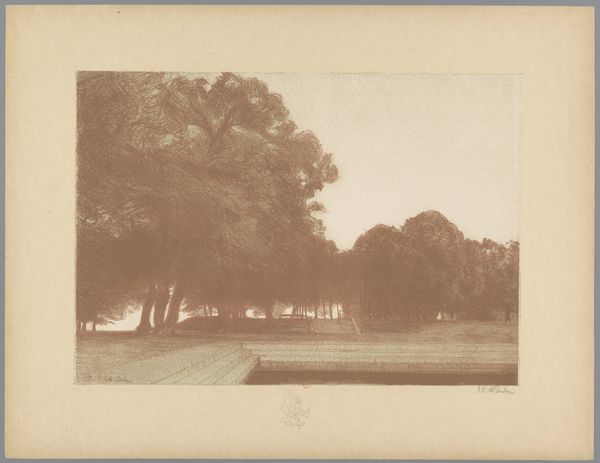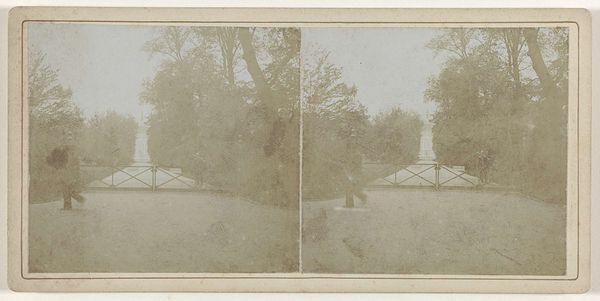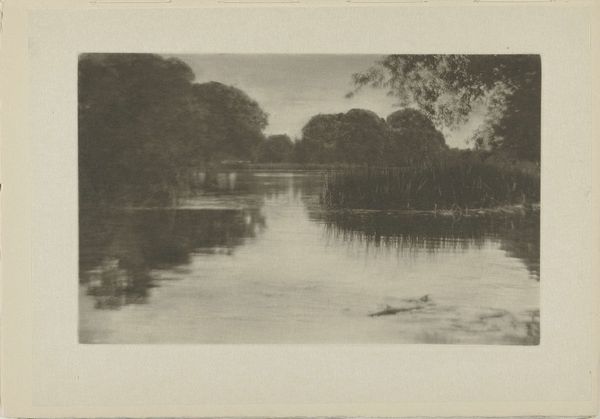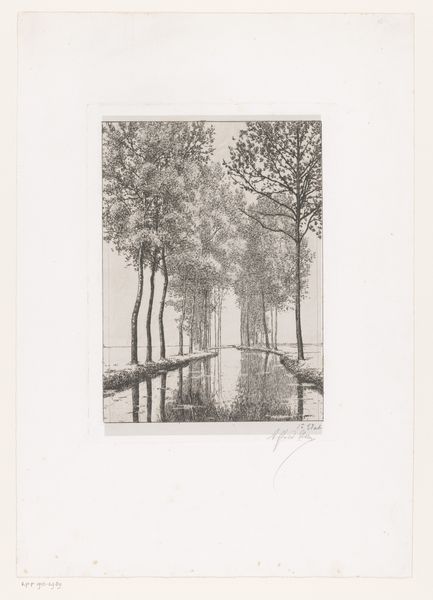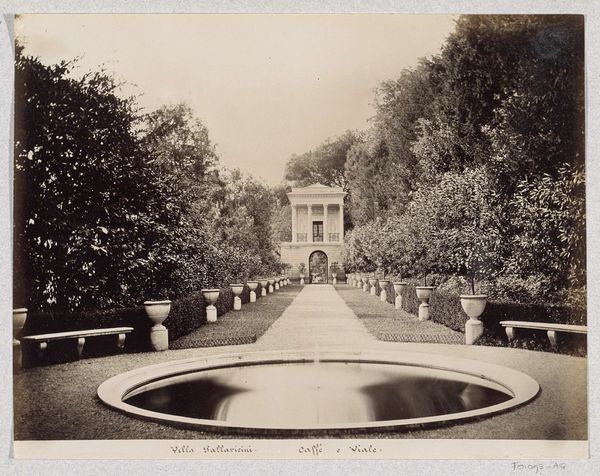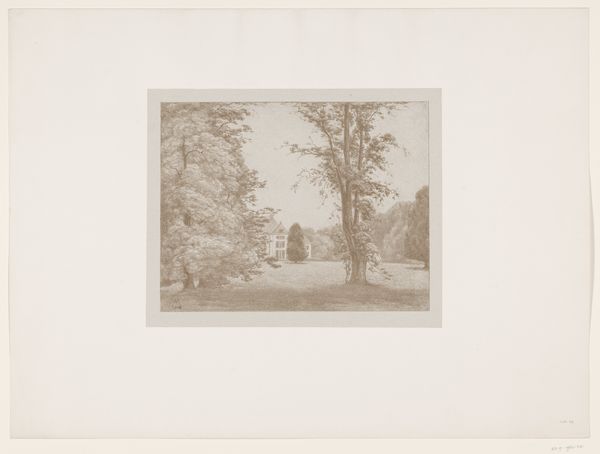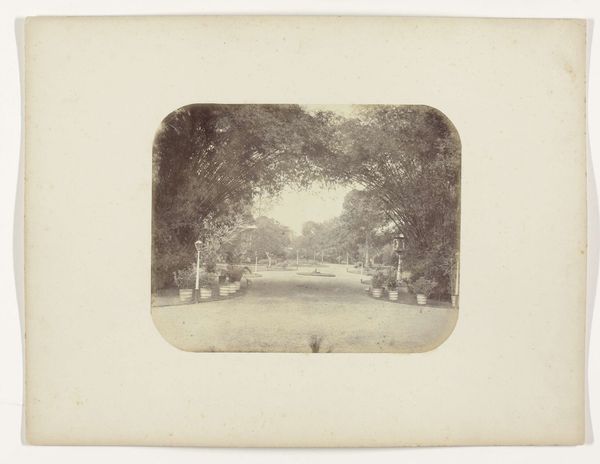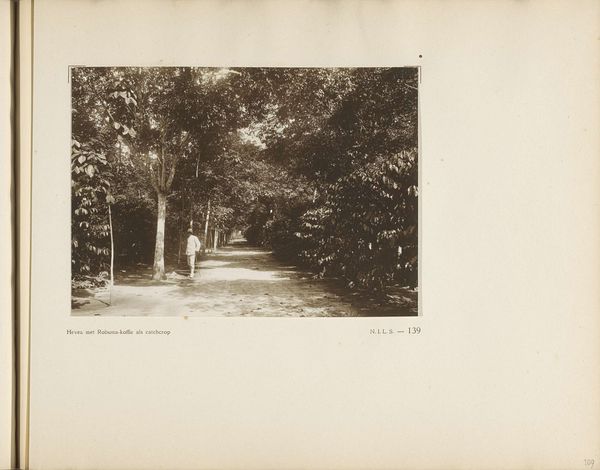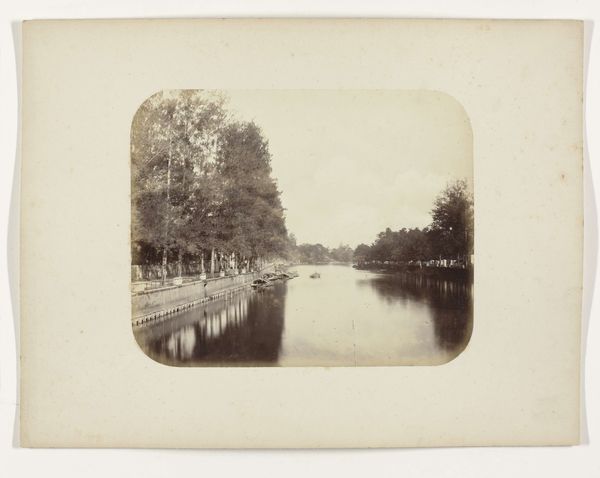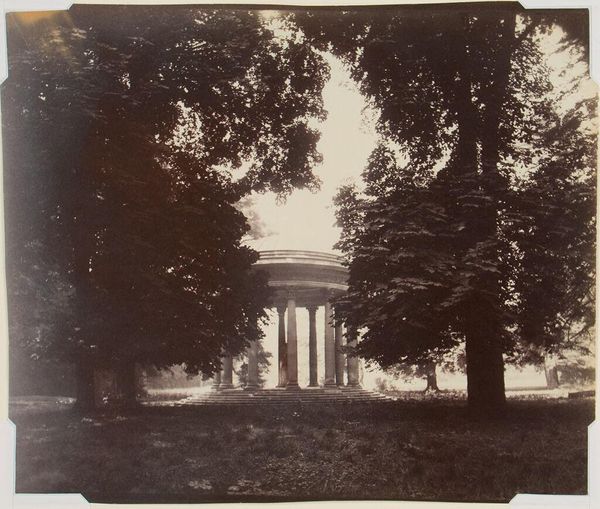
Dimensions: height 168 mm, width 230 mm, height 199 mm, width 269 mm
Copyright: Rijks Museum: Open Domain
Editor: This is “Gezicht op een landhuis,” or "View of a Country House," a photograph from 1897 by Henry Pauw van Wieldrecht, currently at the Rijksmuseum. The reflection in the water makes it look almost like a dream. What strikes you about it? Curator: I see a fascinating glimpse into the social structures of the late 19th century. The prominent display of the landhuis, a symbol of wealth and power, tells us a great deal about the societal values and hierarchies that Van Wieldrecht was likely both a part of and commenting upon. Do you think this idealized portrayal accurately reflects the lived experience of everyone in that period? Editor: Probably not! I imagine the people working on the land didn’t have quite the same idyllic view. Curator: Exactly. It's also worth noting how the photographic process itself contributed to this imagery. Early photography, like painting, was often used to create a sense of order and permanence, subtly reinforcing existing power structures. The framing, with the house centered and reflected, creates a deliberate sense of balance and control. Does this reinforce or challenge your initial interpretation? Editor: It makes me think about who had access to this kind of beauty, or this *portrayal* of beauty, back then. And how photography could be used to create a specific narrative. Curator: Precisely! By considering the social and historical context, we can move beyond simply appreciating its aesthetic appeal and start to unpack the complex relationship between art, power, and representation. This photo invites us to question the image and its function within society. Editor: That’s a really interesting point, thank you for broadening my understanding. I am going to reflect a lot on what photography meant as a public facing image then.
Comments
No comments
Be the first to comment and join the conversation on the ultimate creative platform.

